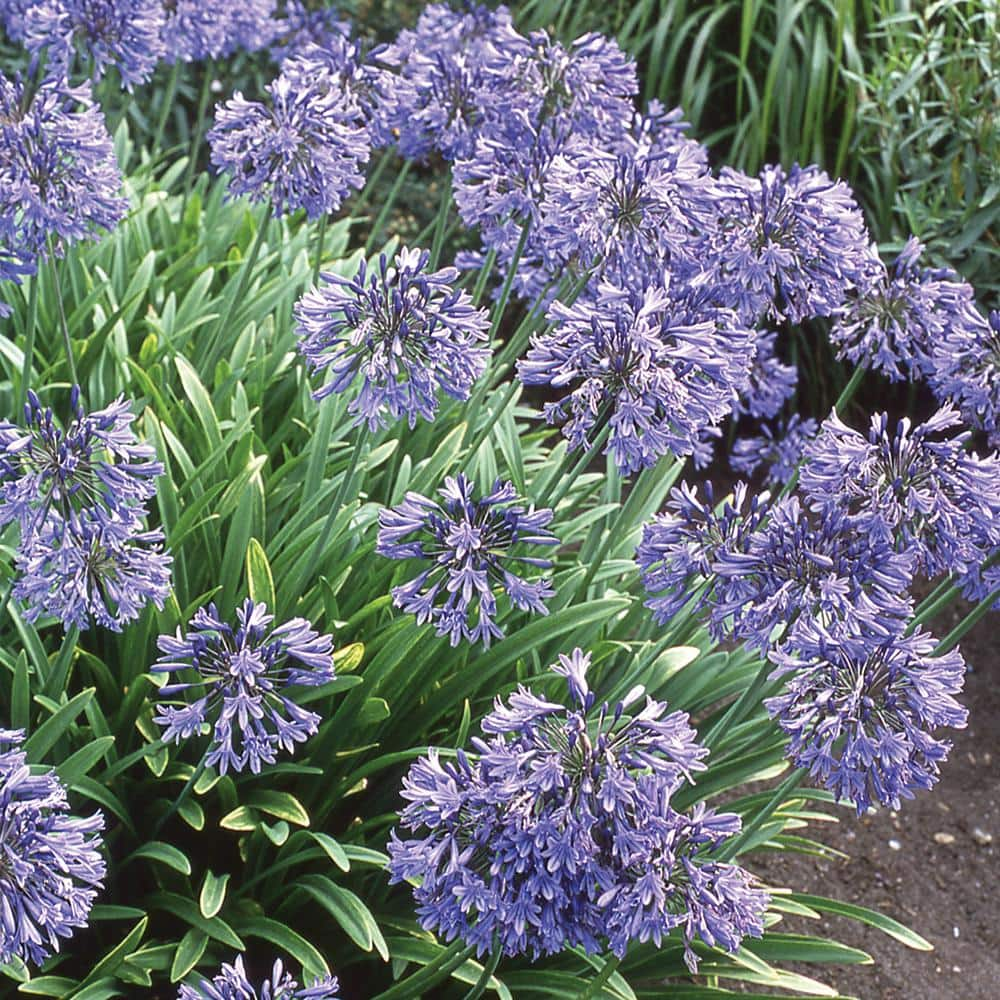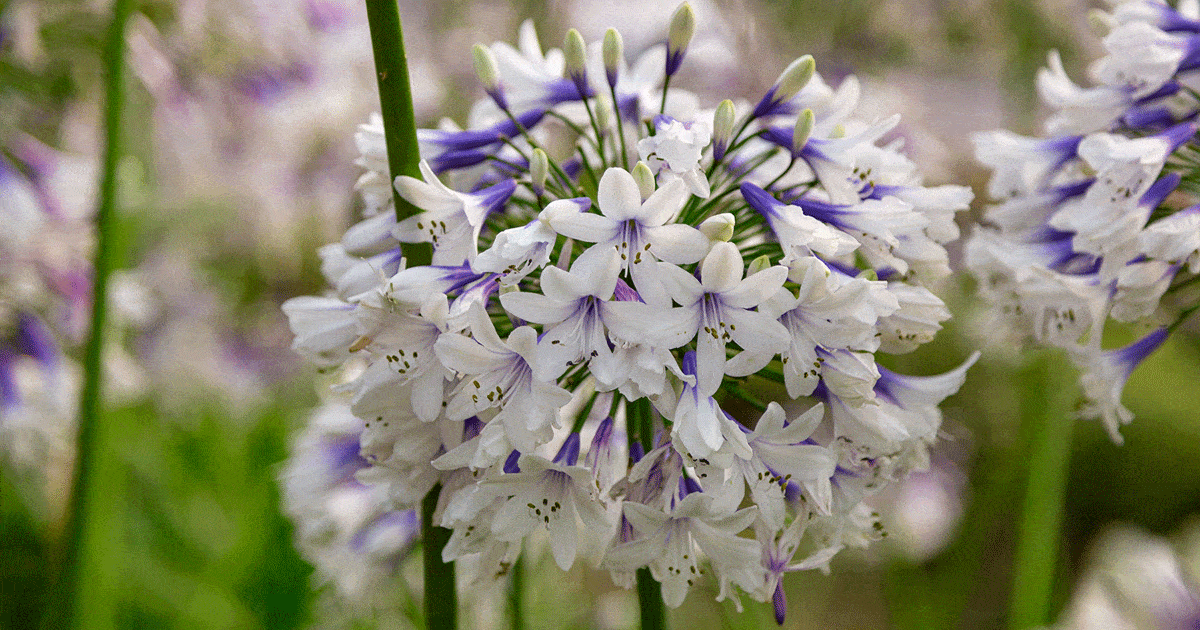Agapanthus Friend Plant Kingdoms: Perfect Pairings for Your Garden
Agapanthus Friend Plant Kingdoms: Perfect Pairings for Your Garden
Blog Article
Grasping the Art of Agapanthus Care: Important Steps for Healthy And Balanced Development and Dynamic Flowers
In the world of gardening, the growing of agapanthus stands as a gratifying undertaking for those that look for to support these sophisticated flowering plants. From choosing the appropriate range to mastering trimming techniques, the journey towards growing prospering agapanthus plants is diverse and holds the essential to unlocking the complete potential of these agricultural treasures.

Picking the Right Agapanthus Selection

When choosing the ideal Agapanthus selection for your yard, take into consideration variables such as climate suitability, bloom color, and development behavior. Agapanthus, typically known as Lily of the Nile or African lily, can be found in a range of shades varying from tones of blue and purple to white. Choose a flower color that complements your existing yard combination to develop an unified landscape. Additionally, think about the environment in your region to ensure the Agapanthus range you choose can prosper in your details conditions. Some ranges are much more tolerant of cold temperature levels, while others like warmer climates. Comprehending the development routine of various Agapanthus ranges is important for appropriate positioning within your garden. Some selections have a clumping development practice, ideal for boundaries or containers, while others have an even more dispersing nature, ideal for ground cover or mass growings. By thoroughly examining these aspects, you can select the ideal Agapanthus selection to improve the charm of your yard.
Ideal Planting Conditions
Thinking about the optimum environmental needs is vital for effective Agapanthus growing. Agapanthus grows in well-draining soil with a somewhat acidic to neutral pH degree. When planting, select a location that receives full sunshine to partial shade. In hotter environments, offering some mid-day shade can protect against scorching of the fallen leaves. Agapanthus plants are sensitive to chilly temperature levels and should be shielded from frost throughout winter season.
To guarantee healthy and balanced growth and dynamic blossoms, plant Agapanthus light bulbs at a deepness of concerning 2-4 inches and room them 8-12 inches apart. Adding organic matter, such as compost, to the dirt can boost drain and fertility, advertising robust origin growth. Mulching around the base of the plants helps retain moisture and reduces weed development. Routine watering is vital, particularly throughout the expanding season, to maintain the soil constantly wet however not waterlogged.
Watering and Fertilizing Tips
Keeping correct moisture levels and supplying important nutrients are essential elements in the treatment regimen for Agapanthus plants. When it comes to sprinkling Agapanthus, it is critical to strike a balance. These plants prefer regularly wet dirt yet are vulnerable to root rot if overwatered.
Fertilizing Agapanthus is vital for advertising healthy and balanced growth and prolific blossoms. Apply a well balanced plant food, such as a 10-10-10 formula, in the very early springtime as new development arises. By adhering to these watering and feeding pointers, you can guarantee your Agapanthus plants grow and generate lively, durable blooms.
Trimming Methods for Agapanthus
Trimming Agapanthus plants at the proper times and with proper strategies is crucial for maintaining their wellness and promoting ideal growth and flowering. The suitable time to prune Agapanthus remains in late wintertime or very early spring prior to new growth arises. Beginning by getting rid of any type of yellowing or dead leaves near the base of the plant. Cut them as short as feasible without damaging the arising shoots.
For flowered stems, wait until the blooms have perished and then cut them back to the base. This not only cleans up the plant's look however additionally motivates the development of new blossom buds. Deadheading invested flowers can additionally redirect the plant's power into creating even more flowers as opposed to establishing seeds. However, if you want to collect seeds for proliferation, leave some flowers to completely dry and mature on the plant.
Bear in mind to utilize tidy, sharp tools to make specific cuts and minimize the risk of presenting conditions. Agapanthus. Routine trimming will certainly help maintain your Agapanthus looking cool Agapanthus and healthy while making certain an abundant display of beautiful blossoms
Handling Usual Insects and Conditions
After making certain correct pruning strategies for Agapanthus, it is vital other to deal with typical parasites and diseases that can impact the health and wellness and vitality of these plants. Agapanthus plants are typically sturdy yet can still succumb to particular issues. One common parasite that influences Agapanthus is the Agapanthus gall midge. This little, orange fly lays its eggs in the foliage, causing distorted development and blossom buds that fall short to open up. To battle this parasite, trim and damage any kind of damaged plant components and take into consideration making use of insecticidal soap.
One more usual issue is fungal leaf spot, which presents as dark sores on the fallen leaves. To stop fungal illness, make sure great air circulation around the plants, avoid overhead watering, and remove any contaminated fallen leaves without delay. In addition, Agapanthus plants useful site can struggle with root rot if they are grown in improperly draining dirt. To avoid this, plant Agapanthus in well-draining soil and prevent overwatering. By being attentive and taking timely action versus conditions and bugs, you can assist your Agapanthus plants thrive and generate dynamic blooms.

Verdict
In conclusion, grasping the art of agapanthus care entails selecting the best variety, offering suitable growing problems, appropriate watering and fertilizing, suitable trimming techniques, and addressing common insects and illness. By adhering to these necessary actions, you can guarantee healthy and balanced development and vivid flowers for your agapanthus plants. Bear in mind to routinely keep an eye on and keep your plants to promote their overall well-being and durability.
To make sure healthy and balanced development and lively blossoms, plant Agapanthus bulbs at a depth of about 2-4 inches and space them 8-12 inches apart. By adhering to these watering and feeding suggestions, you can ensure your Agapanthus plants grow and produce vibrant, durable blossoms.
One common bug that influences Agapanthus is the Agapanthus gall midget. Furthermore, Agapanthus plants can suffer from root rot if they are grown in improperly draining pipes dirt. By complying with these essential steps, you can make sure healthy growth and dynamic blossoms for your agapanthus plants.
Report this page